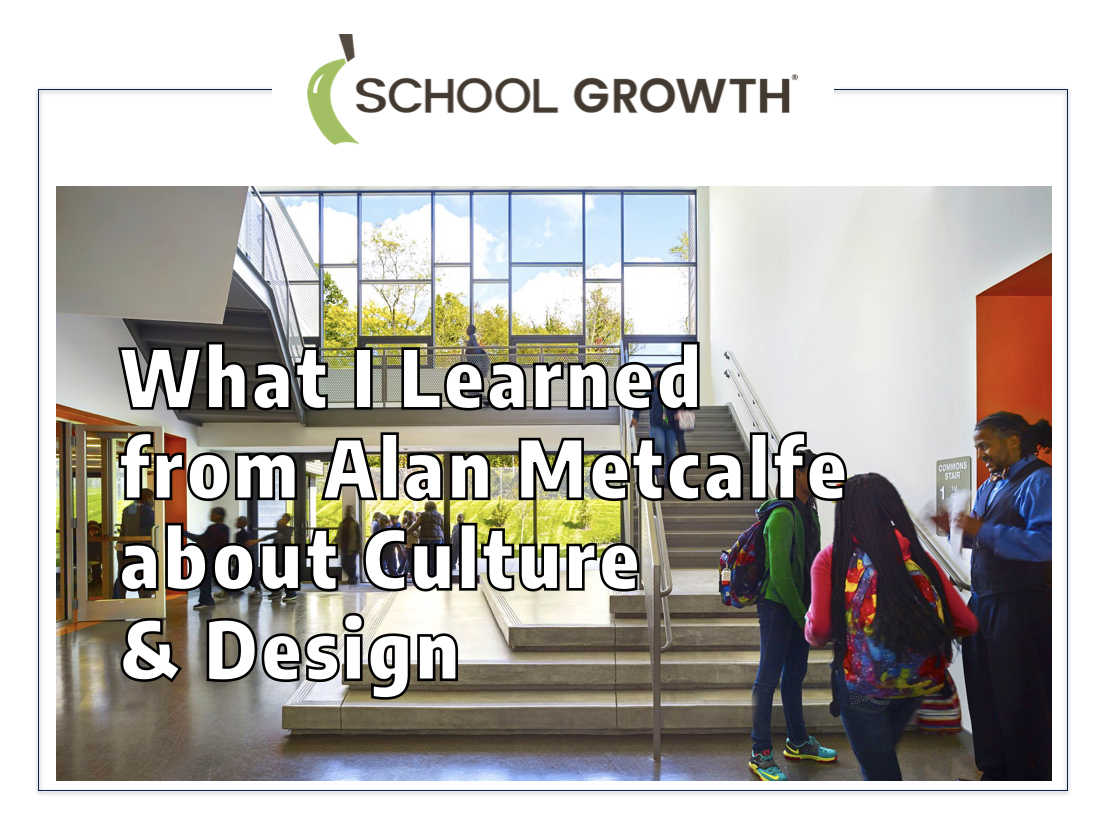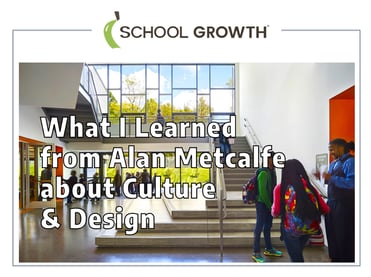
What I Learned from Alan Metcalfe about Culture and Design
 We are constantly searching for new strategies to grow schools and elevate the culture for educators. Every now and then we learn about a concept or an idea that we believe is going to have a big impact.
We are constantly searching for new strategies to grow schools and elevate the culture for educators. Every now and then we learn about a concept or an idea that we believe is going to have a big impact.
That's what happened when we met Alan Metcalfe at the National Business Officers Association (NBOA) conference a few years ago and learned about Interpretive Master Planning.
If you're looking for a better way to distinguish your school, then you will definitely want to explore this powerful growth method.
Tammy and I had just finished leading a workshop on data-enabled planning and leadership when Alan Metcalfe and Frank Aloise (the award-winning CFO from Springside Chestnut Hill Academy) walked up. Frank introduced us to Alan Metcalfe, the well-known architect and founder of Metcalfe Architecture & Design.
We could immediately tell that Alan spoke our language regarding school culture and design―and a friendship began. His background as a musician contributes to his understanding of the beauty and harmony that is possible in a school with the right tools and guidance.
This could be interesting!
Interpretive Master Planning
Soon after he began telling us about his work, Alan casually mentioned a term with which I was unfamiliar: "Interpretive Master Planning." He went on to explain that IMP looks at an institution from many points of view to come up with an authentic understanding of its culture.
This participative approach has been used for many decades by museums and other "destination venues" to convey the mission and messages in a deeply engaging way. (We later discovered that there's actually an association of interpretive planners--who knew?)
Constituent interviews are conducted and then summarized into a narrative that defines the culture and drives the design of the spaces that host that culture. This is significantly different from the typical programming interviews used in the functional design of buildings that catalog numbers of occupants and rooms, size, and adjacencies.
The “moments” that define a school's cultural identity include the rituals and traditions, school history, themes, and key messages. They reveal the priorities and suggest how a building or campus feature might host both new and existing events to serve that particular identity. This qualitative data is combined with quantitative pricing data to develop a proposal for specific buildings and spaces.
The information gathered through this process is used to bring the strategic and master plans to life by creating experiences and spaces that support the desired culture and unique identity. In other words, the campus design actually contributes to the desired culture.
Whole School Pathway
It took several months of collaborative research, but the effort was worth it!
We’re pleased to share with you that we’ve integrated our School Growth Design Framework and the Interpretive Master Planning and Design used by Alan’s firm to create a "Whole School" pathway to sustainable excellence. This gives us the ability to elevate the people and culture, while also producing a beautiful campus and a wise financial model.
Some innovative schools have already begun utilizing IMP. St. Agnes Academy—St. Dominic School (TN), The Wheeler School (RI), and Mount St. Joseph’s Academy (PA) are examples where the leadership is taking bold steps to elevate the quality and consistency of the experience through this methodology. It’s a reflective journey that provokes the collective mindset in order to achieve meaningful breakthroughs.
And it doesn't require funding a new building to take advantage of IMP. Some start with small projects that produce immediate impact and then graduate to larger projects as momentum and commitment grow.
Campus Culture Curriculum Type
An interesting element of our collaboration with Alan and his team is an assessment we’ve created to help schools determine how the campus design contributes to the culture and curriculum.
How well does the overall campus design support the level of community and engagement promised to faculty and families?
Is curriculum innovation enabled or constrained by the layout and structure?
Do the faculty and families utilize the facilities in a manner that is conducive to joyful learning?
Ultimately this assessment is used to determine the Campus Culture Curriculum Type:
- Culture-Positive: Enables and encourages strategy-aligned experiences
- Culture-Neutral: Neither advances nor limits the culture and curriculum
- Culture-Negative: Limits the effectiveness of the faculty and strategies
CLICK HERE if you're curious enough to learn more about the Campus Culture Curriculum Type Assessment and Interpretive Master Planning.
Walking this journey with educators is much more fun when you're with friends. We're very excited about this collaborative partnership with Alan Metcalfe and his team to deliver innovative, holistic designs that elevate the experience for educators and families.
Because, after all, our calling is to Love’em and Lead’em!

.png?width=1000&height=199&name=SG-Logo3-Transparent-1000x199px%20(1).png)




